When we last visited my sister and her husband at their home in Brittany, one of the most memorable day trips was to the Valley of the Saints at Carnoet. We saw over 60 of these vast carved granite statues of Breton Saints during our visit. Watching the sculptors working so hard on a scorching day while creating new additions for the site was extraordinary.
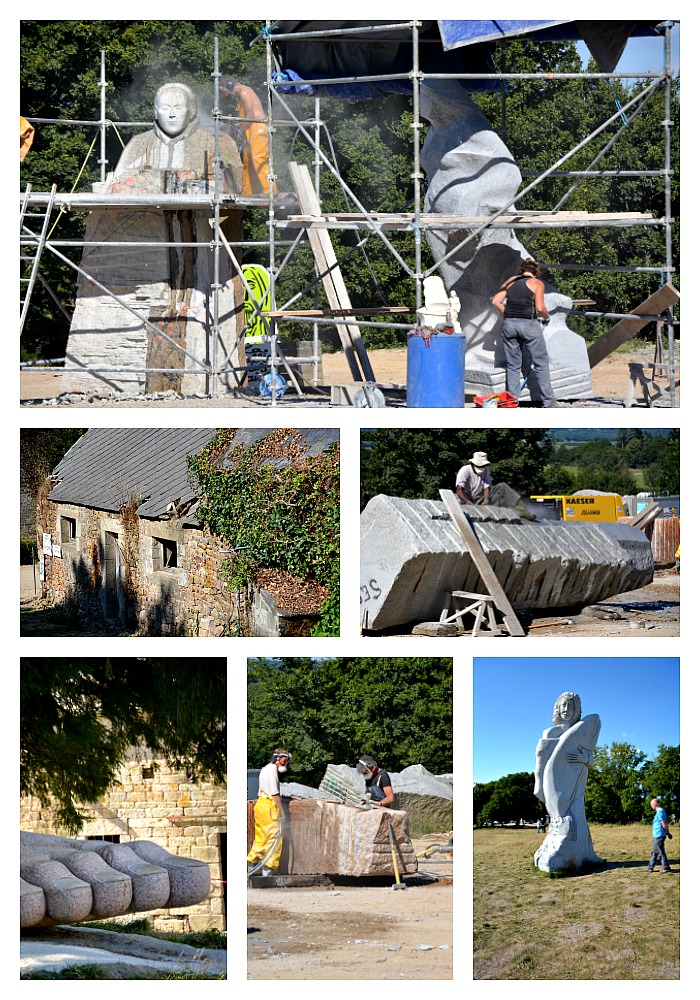 Many statues were over 4m high and towered over the visitors who walked around the parkland. Although it is hard to see in the photographs, the statues were tactile and featured several different textural finishes, from polished to rough, within the same sculpture.
Many statues were over 4m high and towered over the visitors who walked around the parkland. Although it is hard to see in the photographs, the statues were tactile and featured several different textural finishes, from polished to rough, within the same sculpture.
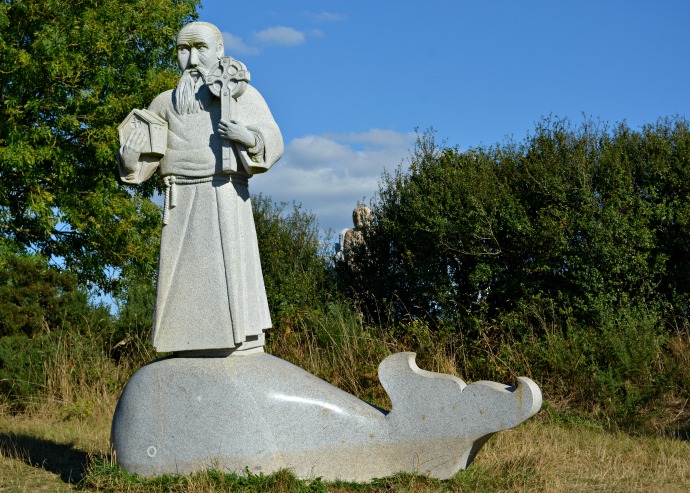
Brendan, patron saint of seafarers, was a monk born in Ireland during the 5th Century. He was dubbed the navigator after undertaking numerous sea voyages. He was inspired by Angels to devise monastic rules and founded several monasteries. He is shown standing on the back of a whale, where he is said to have celebrated Easter Mass.
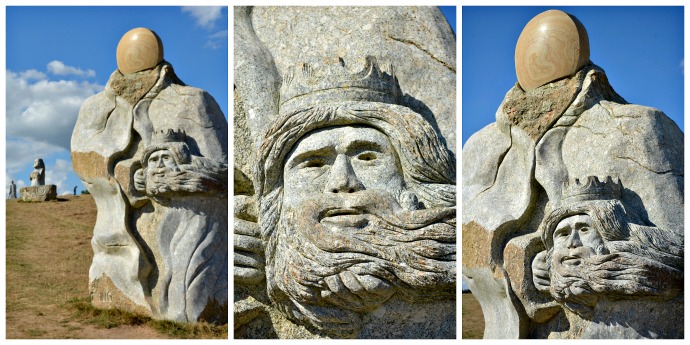
In 538, Milio, the Duke of Armorican Cornwall, whom his people much loved, was assassinated by his brother, who wanted to seize power.
We saw a few decapitated saints as we wandered around the statues.
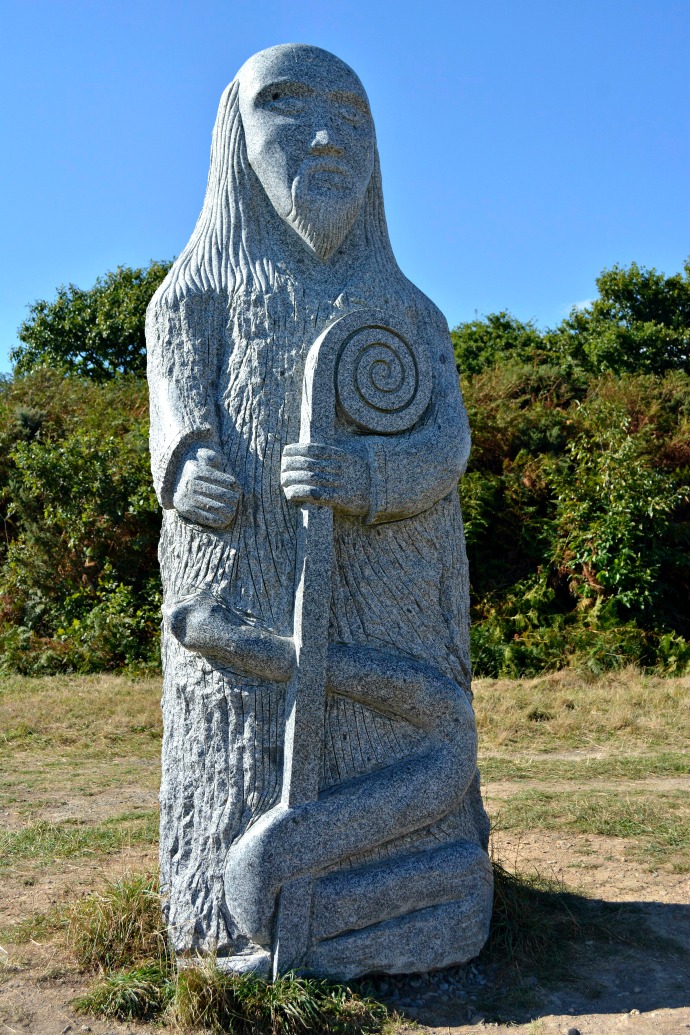
Patern lived in Ireland, where he completed his Christian training before being ordained a bishop in Vannes in 465. The local population did not welcome the new religion, and Patern soon distanced himself from them in pursuit of a life of tranquillity and prayer.
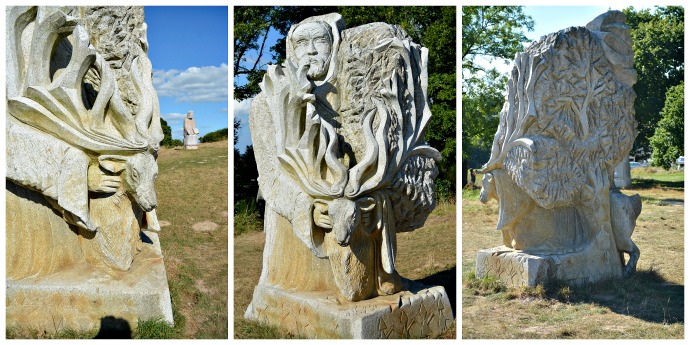
Telo was born in Wales and arrived in Dol in the 6th Century, where he was an assistant to the first Bishop. He returned to his homeland and died in his monastery in 560. Telo is often represented riding a deer, the mythical animal of the Celts.
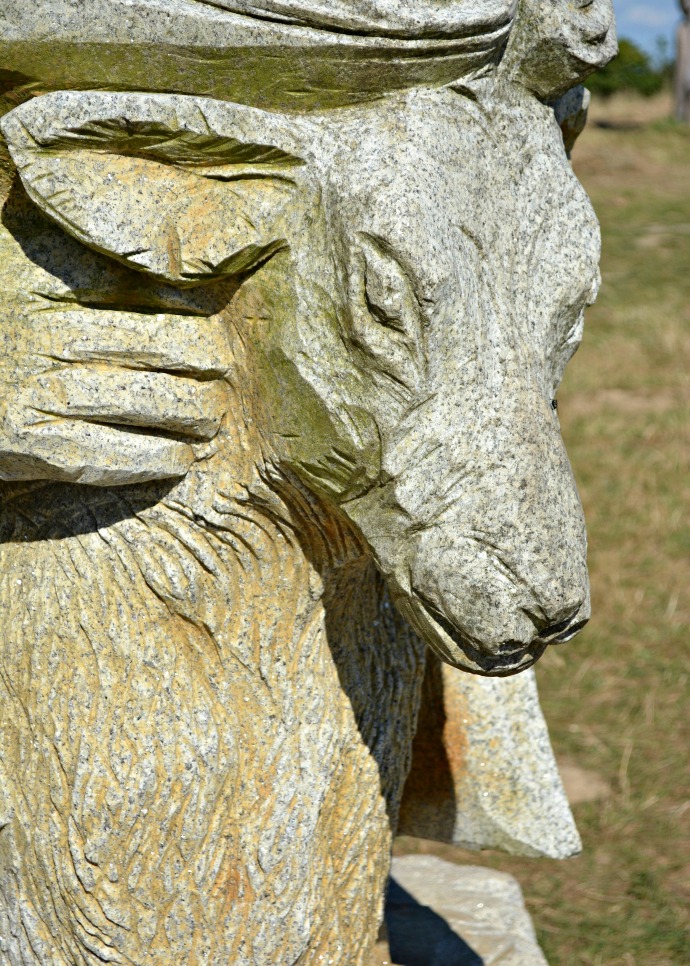
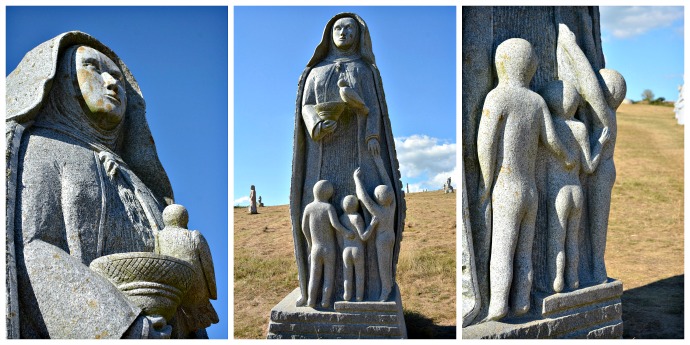
Koupaia was the wife of the King of Brittany in the 6th Century. She was the mother of 3 saints, Tugdual, Seve and Leonor. After taking refuge in Britain following an invasion, she returned to Brittany with one of her sons to spread the Christian faith. Together, they created several monasteries.
It was a fantastic experience walking around the site and looking at so many saints brought to life in granite. I have only shown a few of the photos that were taken when we visited. I have never seen anything quite like this sculpture park before and have not attempted to tell you about all of the saints depicted here.
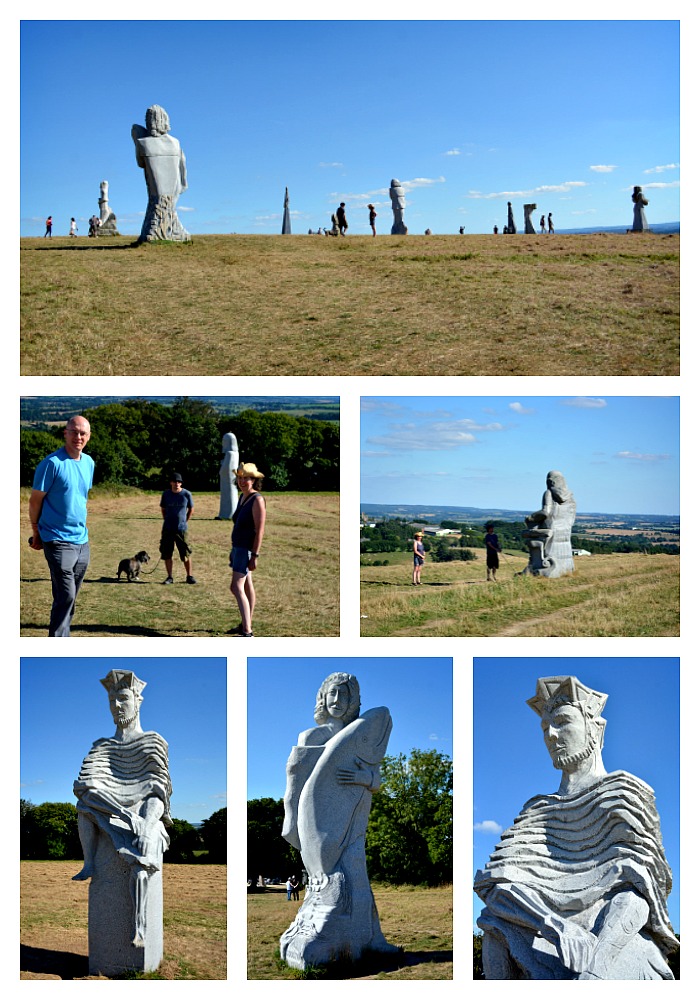 Goustan is the saint in the middle photo (above), depicted holding a large fish. At 18, pirates captured him and abandoned him on the Island of Hoedic. Every day, he ate a slice from a fish, which miraculously reappeared whole each morning. St Felix rescued him, and together, they travelled to Saint Gildas de Rhuys Abbey, where they revived it spiritually and materially.
Goustan is the saint in the middle photo (above), depicted holding a large fish. At 18, pirates captured him and abandoned him on the Island of Hoedic. Every day, he ate a slice from a fish, which miraculously reappeared whole each morning. St Felix rescued him, and together, they travelled to Saint Gildas de Rhuys Abbey, where they revived it spiritually and materially.
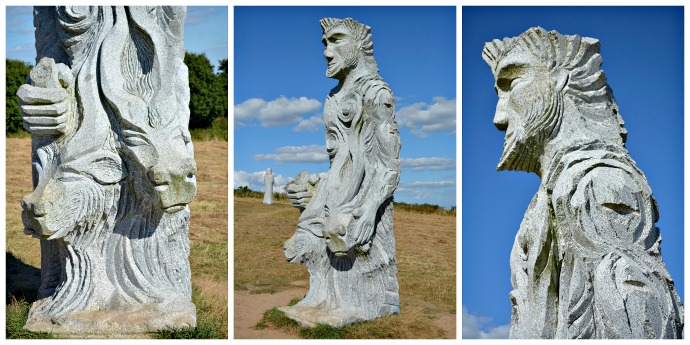
Jaoua lived in Britain in the 6th Century. After arriving in Brittany, he became a monk and then a priest. He was sent to Brasparts to evangelise the reluctant pagan population and introduce them to the new religion.
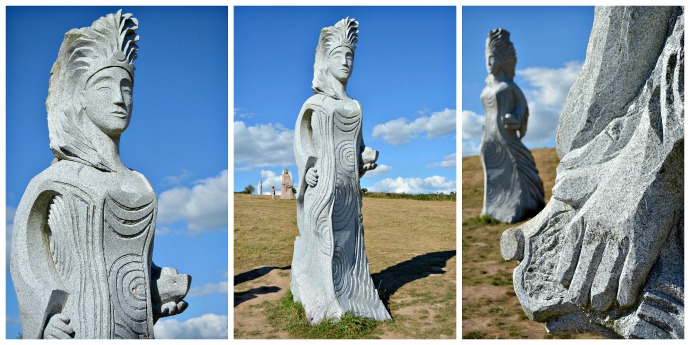
Born in the 6th Century, Tunvez came from Ireland with her brother Eneour. Each grasped a giant pebble hurling it as far as possible so that a hermitage would be built where it fell. Tunvez through hers as far as Kerity. She holds a boat in her hand, symbolic of her role as protector of deep-sea fishermen, and a stone, representing the one she threw.
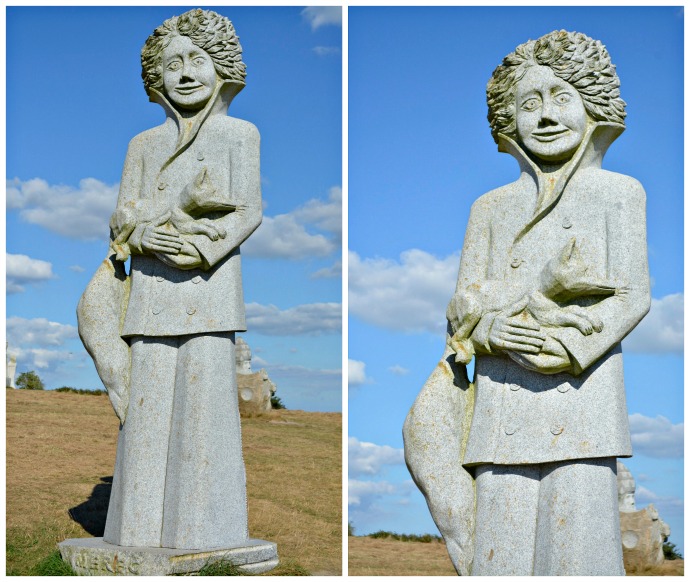
Merec. The seven Merec saints were abandoned by their mother at their birth, and a white doe is said to have adopted and fed them. Although modern times are not suited to enchantment, the doe is still said to come to the Church of St Merec crib at Christmas.
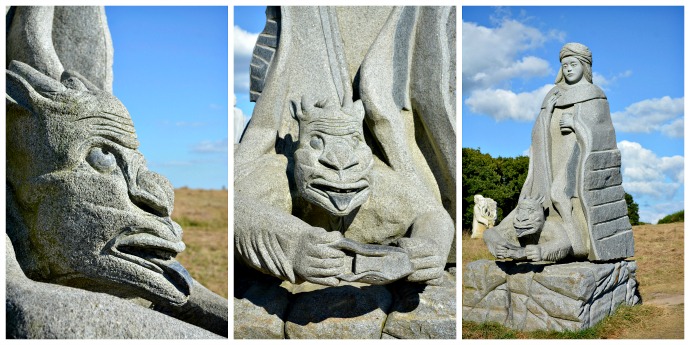
Idi, the Breton form of Issey, is a saint born in Cornwall in the 4th Century.
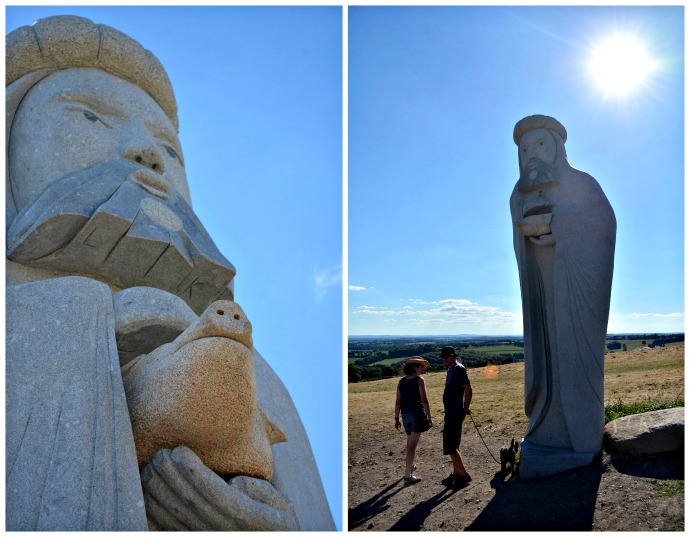
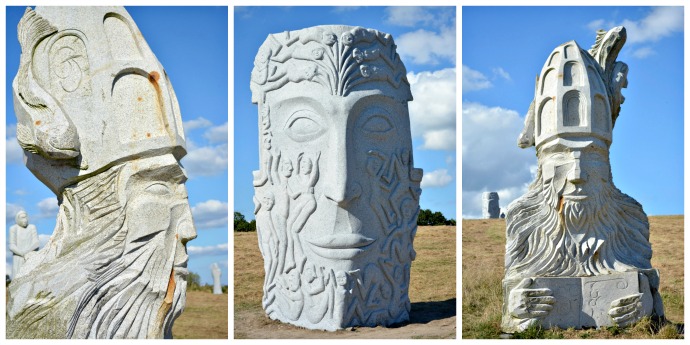
The photos on the left and far right are of Tudi, a disciple of St Maudez in the 6th Century. He founded a hermitage on the island of Tudy. He was one of the great evangelists of Cornouaille in the 6th Century and founded a monastery at Loctudy.
If you are visiting Brittany, the Valley of the Saints is well worth a visit!

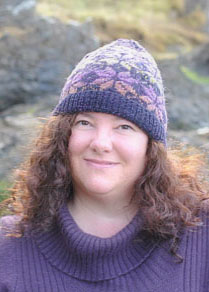
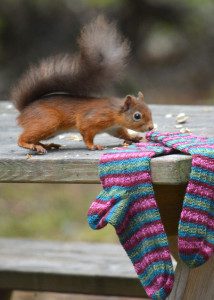
I'd love to hear from you. Let me know what you think...